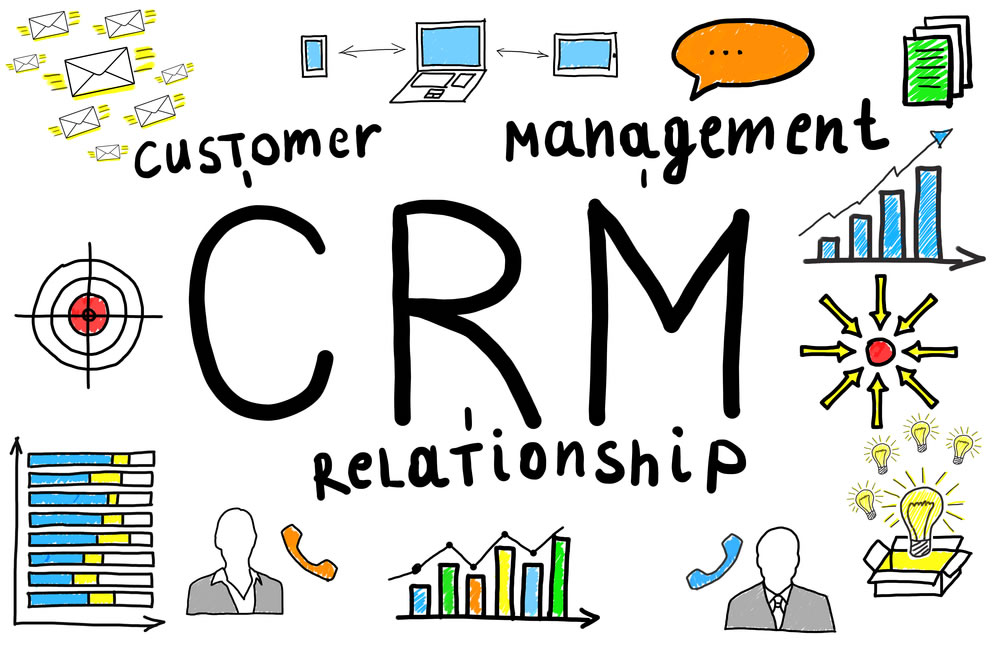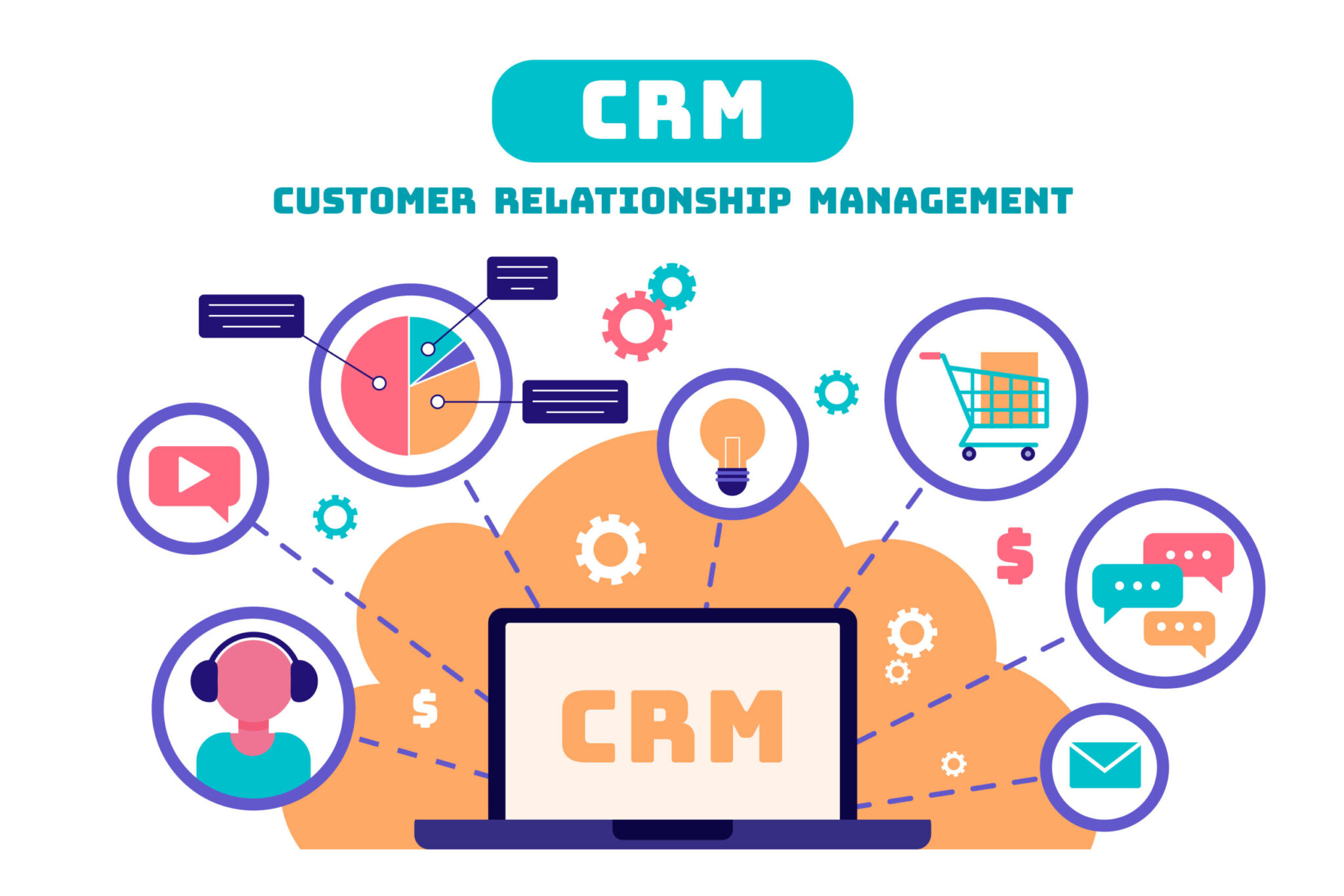There are many types of information systems that develop according to business needs in this era of information technology. Have you ever heard the term components of customer relationship management? If not, CRM is one of the types of information systems that are currently widely used to help a company’s business.
In this article, we will discuss about components of customer relationship management starting from understanding, objectives, functions, to examples of applications. This type of information system is closely related to relationship management between the corporation and the customer or customer.
What is Components of Customer Relationship Management
Customer Relationship Management or CRM is an approach or system that manages the relationship between the corporation (company) and customers at the business level. So, it can maximize communication and marketing through contact from different users.
This type of approach can make it possible to retain customers and provide added value to these customers. CRM itself combines policies, processes, and strategies in one unit that is implemented in a company.

Customer Relationship Management Objectives
The objectives of making this CRM-based information system are as follows:
- The first goal of CRM is to increase profits for a company through the establishment of good relationships between corporations and related customers.
- Provide complete information about customer data to maximize the relationship between the company and customers through up selling and cross selling.
- Using information that has been integrated so as to produce a satisfactory service system.
- Produce consistency in making procedures for channelling answers to customers.
Function of Customer Relationship Management
In the CRM system also has functions that must be applied, including the following:
- Implementing a customer-centric philosophy.
- Identifying important factors for customer needs.
- Building a maximum customer service process.
- Adopt measurements based on the customer’s point of view.
- Provide full support to customers.
- Handling complaints from customers.
- Keeping records of every aspect of sales.
- Create information related to the service centre and sales from customers.
8 Components of Customer Relationship Management
Human Resource Management
Human Resource Management involves the effective and correct use of human resources and skills at any given time and situation. It entails ensuring that the skills and intellectual level of the professionals match the tasks performed by them according to their job profile.
It is a critical component not only for large-scale enterprises but also medium-sized industries. It involves adopting effective strategies and studying the skills or the workforce and the resulting growth so as to design and implement the necessary strategies according to the company’s developmental goals.
Prospect/Leads Management
Leads management or prospecting as the name implies refers to keeping track of sales leads as well as their distribution. The businesses that benefit from this component of CRM are sales industries, marketing companies, and customer executive centers.
It involves efficient marketing management, designing customized forms, completing emails and several other elements. An extensive study of customer buying patterns, as well as potential sales, leads to help capture leads and get maximum sales to increase sales.
Customer Relationship Services
Customer Relationship Management emphasizes on the collection of customer information and data, information and their buying patterns and involves providing the collected information to the necessary and related departments.
This makes customer service an important component of CRM. Almost all key departments including the sales department, marketing team, and management personnel are required to take steps to develop their awareness and understanding of customer needs as well as complaints.
This undoubtedly makes the business or company to provide quick and perfect solutions and assistance to the customers as well as fulfil their needs which increases dependability as well as gains customer trust.
Marketing Management
Marketing is one of the most important components of Customer Relationship Management and refers to the promotional activities adopted by companies to promote their products. Marketing can be targeted towards a specific group of people as well as the general public.
Marketing involves creating and implementing strategies to sell products. Customer Relationship Management helps in the marketing process by enhancing and improving the effectiveness of the strategies used for marketing and promotion.
This is done by conducting observations and studies of potential customers. Some of the key elements of marketing are Marketing Campaign Management, Activity Management, Document Management, Call Management, Bulk Email and Reporting. The use of the aforementioned elements varies from business to business according to its nature and requirements and marketing targets.
Workflow Automation
A number of processes run simultaneously when it comes to management and this requires efficient cost cutting as well as streamlining on all processes. The phenomenon of doing so is known as Workflow Automation.
It not only reduces excess spending but also prevents the repetition of certain tasks by different people by reducing the work and labour that is increasingly wasted on work that could have been avoided. Directing documents and filling forms are some of the elements of the process and aim at preventing excessive loss of time and effort.
Business Reporting
CRM comes with sales management, customer service reports, and marketing. Customer service reports help company executives to gain insight into their management and daily work operations.
It allows one to know the exact position of the company at any given instance. CRM provides reports about the business and that makes it play a major role here. It is ensured that the reports are accurate and precise. Other important features are forecasting and the ability to export business reports on other systems. To make comparisons, one can store historical data as well.
Analytics
Analytics is the process of studying and representing data to observe trends in the market. Creating graphical representations of data in the form of histograms, charts, images and diagrams that utilize current data as well as those generated in the past.
This is critical to achieving a detailed understanding of market trends and consumer buying patterns. Analytics is a very significant element of Customer Relationship Management as it allows for an in-depth study of the information required to calculate progress in the business.
Different components of Customer Relationship Management are associated with different elements mainly, customer acquisition, customer value enhancement and customer retention. Various marketing applications are carved out to gain more customers whereas the database of CRM and analytical tools help businesses to keep customers with better communication and relationships.
To increase customer value among existing and future customers. Overall, each of the discussed components of Customer Relationship Management is essential to improve the working structure as well as the market response to businesses and their products.
The above are the main components of Customer Relationship Management system, and all of them work complementary to each other to achieve maximum results, namely increasing customer retention and customer satisfaction and increasing your company’s profit growth.
Finally, hopefully the information we present is useful. See you in the next article.
